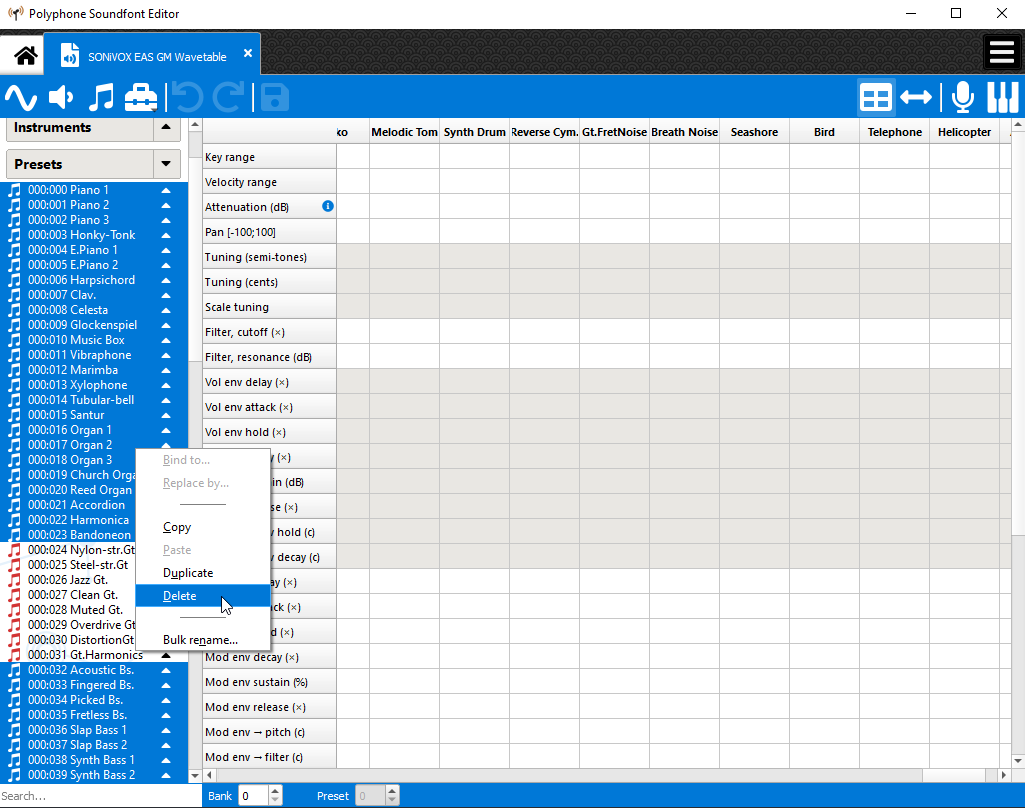

- HOW TO PUT MULTIPLE .SF2 FILES IN ONE HOW TO
- HOW TO PUT MULTIPLE .SF2 FILES IN ONE MANUAL
- HOW TO PUT MULTIPLE .SF2 FILES IN ONE ARCHIVE
- HOW TO PUT MULTIPLE .SF2 FILES IN ONE SOFTWARE
- HOW TO PUT MULTIPLE .SF2 FILES IN ONE FREE
The main applicable part of this document to DAWs would be the sections on audio devices and drivers.
HOW TO PUT MULTIPLE .SF2 FILES IN ONE SOFTWARE
DAWs handle many aspects of the MIDI setup for synthesizers internally, both presenting a different interface and eliminating some of the difficulties faced when using stand-alone software synthesizers. Those using Digital Audio Workstation (DAW) software may or may not find this document useful. Programs like Cakewalk Sonar and Steinberg Cubase are examples of DAWs for Windows.
HOW TO PUT MULTIPLE .SF2 FILES IN ONE HOW TO
Details on how to set up equipment and software for specific tasks can be found at the end under “Configuring MIDI Setups.” 1.1 A Note for Digital Audio Workstation Users This document includes both general remarks and explanations about MIDI and audio devices as well as various MIDI-related software recommendations.
HOW TO PUT MULTIPLE .SF2 FILES IN ONE MANUAL
For details, consult the tar manual page on the command line, enter: The tar command has many options available.
HOW TO PUT MULTIPLE .SF2 FILES IN ONE ARCHIVE
For example, some versions of tar (not GNU tar) require that the -f option be immediately followed by a space and the name of the tar archive file. When using the tar command, the order of the options sometimes matters. To extract the contents of a tar archive file compressed with compress (for example, my_), use the following command: If you are not using GNU tar and need to extract the contents of a tar archive file compressed with gzip (for example, my_), use the following command: To extract the contents of a tar archive file compressed with gzip (for example, my_), use the following command: To extract the contents of a tar archive file created by tar (for example, my_files.tar), use the following command: If gzip isn't available on your system, you can use the compress utility to create a compressed archive (for example, my_) for example (replace file1 and file2 with the names of the files you want to combine): If your system does not use GNU tar, but nonetheless has gzip, you can create a compressed tar archive file (for example my_ with the following command (replace file1 and file2 with the names of the files you want to combine): tar.gz are equivalent both signify a tar archive file compressed with gzip.

HOW TO PUT MULTIPLE .SF2 FILES IN ONE FREE
Many Linux distributions use GNU tar, a version of tar produced by the Free Software Foundation. The -v option tells tar to be verbose (report all files as they are added).If you don't use the -f option, tar will assume you want to create a tape archive instead of combining a number of files.



 0 kommentar(er)
0 kommentar(er)
